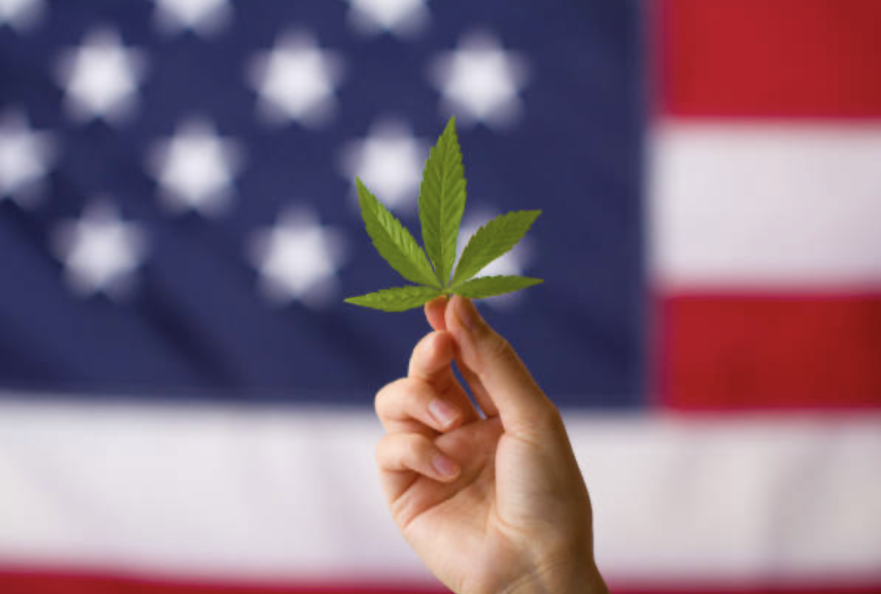The history of cannabis and hemp in the United States predates the founding of the country. George Washington grew hemp. As did Thomas Jefferson, John Adams, and William Penn — still, Nixon would go on to make hemp federally illegal.
Initial Use & Origins
Like the tobacco leaf that sewed the founding of the Chesapeake colonies to the English crown, hemp was tremendously useful to the earliest Americans. Reports from planters tell of the most prosperous stalks reaching 14 feet tall, a protective resin shielding insects from its stem, and a yield in “fibers per acre” which doubled that of flax seed. The prominence of hemp continued to rise, becoming the “material of choice” for all the British Empire’s maritime activities, then, it reached its pinnacle when sales were partially funding the American War of Independence.
From the ropes directing the sails of our first explorers, to the distribution of pamphlets and newspapers to a population in open rebellion, and even laying the foundation of our most important political document and the first American flag, hemp became the scaffolding for dissatisfied colonies to form a more perfect union.
In the Colonies
The original thirteen colonies instituted some of the oldest cannabis laws in the world. Nearly a decade after the founding of Jamestown, all settlers were encouraged to grow hemp and in return, the British Parliament would send cash bounties. Moreover, in 1632, the Virginia Assembly voted “that every planter …, provide seede of flaxe and hempe.” Even William Penn is believed to have founded the colony of Pennsylvania for the sole purpose of growing hemp.
From indigenous populations to Europeans, civilizations were bracketing hemp into its industrial and medicinal parts. Most evidence suggests that hemp, part of the same plant as marijuana, was not commonly used for recreational or intoxicative purposes by the colonists. They pursued the stem for its fibers and textiles, unlike natives who from the leaves, found an alleviator of rheumatism and gout.
At the time, the southern colonies – mere economic ventures – were established to satisfy England’s demand for tobacco-smoking in London, but more importantly for this discussion, to supply nautical equipment for the Navy in the form of cordage in ropes, lines, and sail cloths which all derived their materials from hemp.
Eventually, the 18th century saw hemp become the economic engine for the country – grown across the continent, from Canada to South Carolina. By far, the region which grew the most would go on to encompass the US capital. Occupying 12,000 acres (about twice the area of Chicago O’Hare airport) and bringing in 100,000 pounds (about 45359.2 kg) in annual revenue, hemp became a “commercial staple” for the colony of Virginia.
Hemp’s Role in the Early Republic
In the early republic, citizens were encouraged to plant hemp under the guise of patriotic duty. George Washington’s Mount Vernon plantation was home to vast amounts of hemp and Thomas Jefferson declared the plant the “first necessity to the wealth and protection of the country” and even fashioned his own threshing device to speed up the refinery process. Not only was hemp used to fund the war effort, but rope walks, the primary infrastructure for towns on the Atlantic coast, and homespun military uniforms, similarly relied on the twisting of such fibers.
Winding Down
With western expansion into Kentucky and imports from Russia, production in the original 13 colonies came to a halt. Upon steamships dominating the globe at the end of the US Civil War, innovative technologies maneuvered old ones and the maritime uses for hemp fibers diminished into the late 19th century.
It wouldn’t be until World War II that the United States ramped up its production of hemp for the Navy with the propaganda film Hemp for Victory. Then again, in 1970, with help of President Nixon and Attorney General John Mitchel, hemp would be lumped into the Controlled Substances Act as a Schedule 1 Drug.
Modern Controversy
Recently, politicians have perpetuated the urban myth that the first drafts of the Declaration of Independence were written on hemp paper; however, research from Jefferson’s Monticello reveals it was likely written on Dutch flax or linen rags (the final draft is made of parchment a.k.a. ‘Animal skin’). These claims though disproven, reveal the broader sentiment by a lot of people to interweave hemp into the tapestry of American exceptionalism.
Conclusion
The way cannabis is talked about today conceals how people felt about it in the past. Almost every aspect of life, from farming to infrastructure to warfare, required the presence of hemp, and the notion of making it illegal would have never crossed the minds of our earliest Americans. But they can rest easy, as hemp has been off the Controlled Substance list since the 2018 Farm bill.

